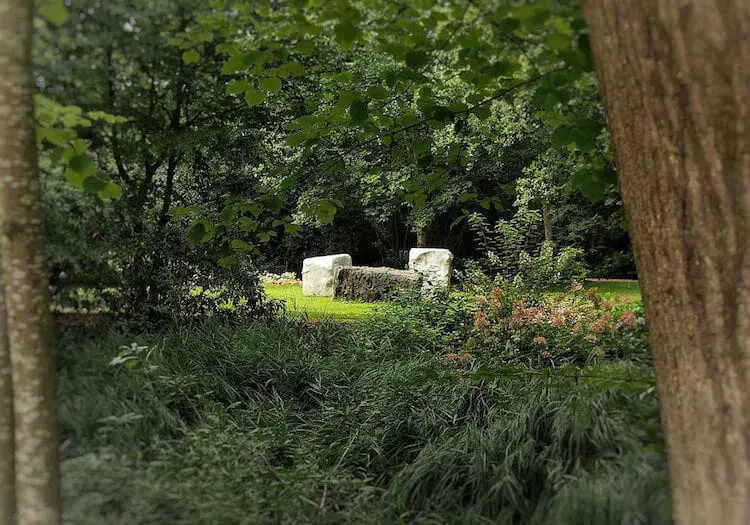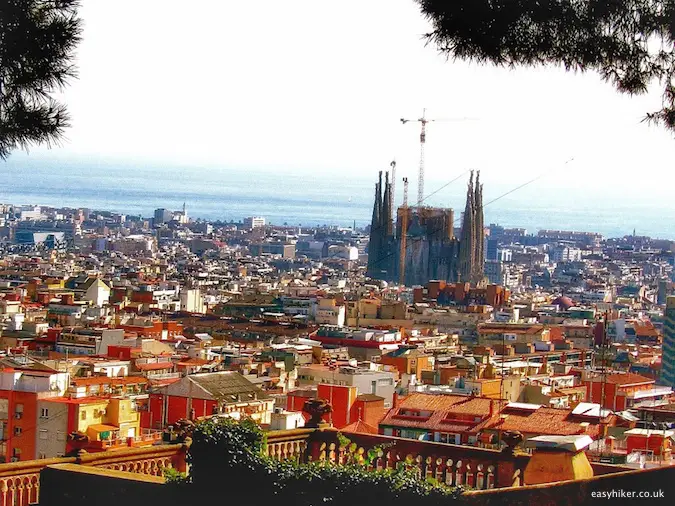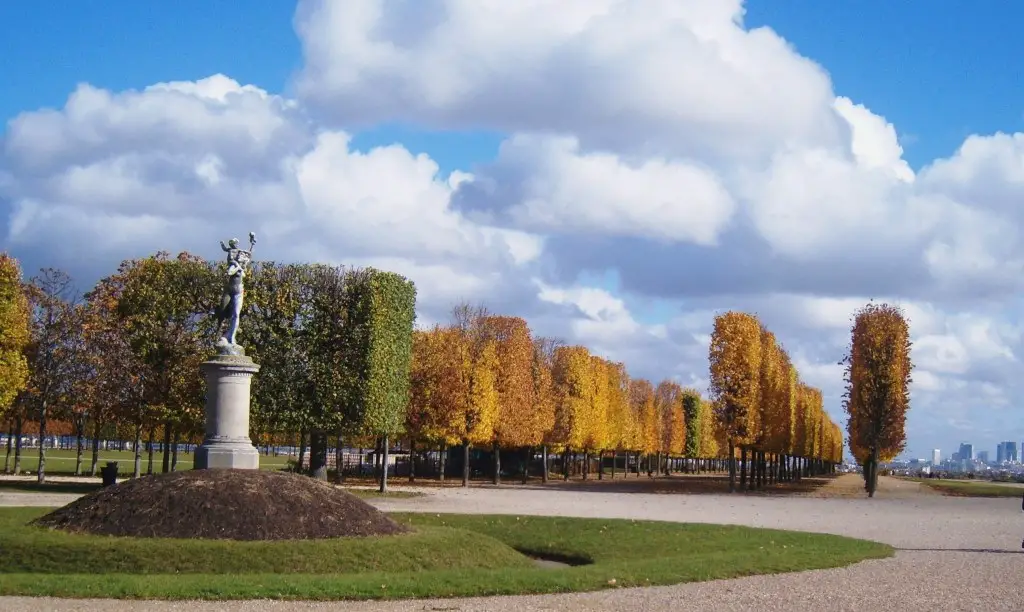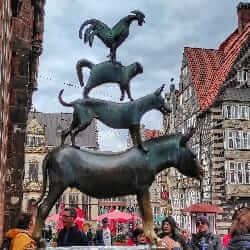Today, we will present you the second half of a great double-bill for a weekend trip in eastern France. From Metz, the place we visited last week, we are today heading off to the regional capital of Nancy.
The two cities are only separated by a 30-minute train ride but offer a total contrast in style and flavour. While Metz is monumental and medieval, Nancy comes across as playful and baroque.
Place Stanislas in the town centre is one of the best, perhaps the best, urban ensemble of baroque architecture in the entire country …

… but above all, Nancy is the city of Art Nouveau, which, after all, echoes the Baroque in many ways – you may call it the Rococo of Modernism.
The local Ecole de Nancy became famous for its own take on Art Nouveau, emphasizing solid craftsmanship rather than Viennese decadence.
The members of the Ecole focused their attention on decorative household objects in the widest sense of the word, always looking for surfaces on which to apply colour and then more colour …

… and on furniture, appearing to dare each other in how far one could go without using a straight line or a right angle.

There are several museums in town where some of the world’s finest examples for this type of Art Nouveau are on show.
But even without visiting a museum, you can discover a lot of Art Nouveau just by walking through the streets of the city – Nancy offers a sufficient quantity of architectural gems to string them together into an entertaining and interesting walk.

Start by crossing the train station forecourt and then turn left into Boulevard Joffre. Stop on the first corner to have a look at the two buildings that are facing each other from opposite sides of Avenue Foch: on your right, the offices of the Est Republicain newspaper from 1912 …

… and on your left, Les Magasins Reunis from 1925 (today occupied by the Printemps department store).

It is hard to believe that these two buildings were designed by the same architect, a little more than 10 years apart. This serves as a timely reminder that Art Nouveau was only a fleeting moment, fluttering through the landscape of art history like one of those colourful birds or butterflies that its decorative images so often depict.
It was a fleeting but also a glorious moment, and art (Nouveau or not) does not get much more glorious than the painted glass ceiling of the Credit Lyonnais building …

… that you can find a few blocks further into the town centre on 7 Rue Saint-Georges.
The interiors of the nearby Paribas branch, at 58 Rue Saint-Jean around the corner, are also worth a look. CL and Paribas are France’s two leading retail banks, which means that their business premises are open to the public, and if you can manage to take photos without annoying staff or customers, nobody will apprehend you.
Actually, this whole neighbourhood within the town centre is a great museum for Art Nouveau exteriors of different styles. The architecture in town often betrays the roots of the Ecole de Nancy in the applied arts.
Maison Arnoux-Masson on 24 Rue Saint Dizier (around the corner from Credit Lyonnais) appears to have been designed with a buffet or a bookcase in mind, …

… the Ancienne Graineterie (the Old Grain Storage Facility on 52 Rue Saint Jean) is essentially a piece of metalwork, …

… and the Pharmacie du Point Central on 35 Rue Saint-Dizier dazzles like a period wallpaper.

Talking about pharmacies, you may also want to take a closer look at the Gingko pharmacy on 38 Rue des Dominicains. It is less spectacular from the outside, but the wooden interiors were designed and crafted by Louis Majorelle, the most famous member of the Ecole de Nancy.
Louis Majorelle may have started as a furniture designer, but became a highly versatile artist who, for example, also created the iron entrance gate of the Chambre of Commerce on 40 Rue Henri Poincaré …

… which we shall pass on our way to lunch.
After all, before we continue our search for Nancy’s architectural Art Nouveau treasures on the other side of town, we shall need some sustenance.
A perfect place for this is the Brasserie Excelsior, for one because they serve classic French food of high quality, but equally because the interiors provide a wonderful example for the grandeur and the style that define the Belle Epoque.

After lunch or a coffee break, we continue our walk on the other side of the train station, the “New Town” that was developed in the late 1800s.
Avenue Foch and its side streets (Rue de la Commanderie in particular) are full of period homes that appear to have been customized to the tastes of a single individual client.
You can, however, also spot larger apartment blocks such as the Maison Lombard and the Maison France-Lanord, constructed side-by-side on 69 and 71 Avenue Foch. They provide a contrast to the more intimate family homes not only in scale but also in style: it seems that the architects of these larger commercial developments tended to tone down the stylistic features of what was then, after all, a new and revolutionary movement.

If you then follow the sweep of the street into Rue de Laxou and turn right into Rue de l’Abbé Gridel, you can see – at no. 3 – the Mangon Building, a perfect example for what an architect could achieve if he was willing to take more of a risk.
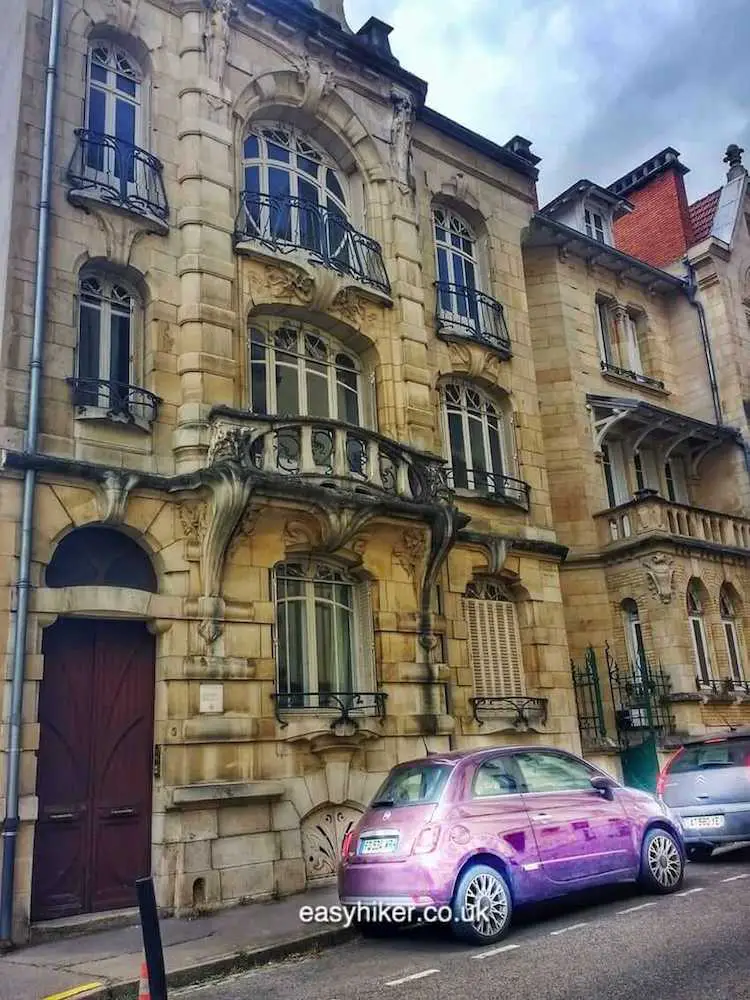
We are now just one block away from what is undeniably the highlight of the walk, the Villa Majorelle on 1 Rue Louis Majorelle.
This building was for many years the home and the workshop of Louis Majorelle, the headmaster of the Ecole de Nancy. It is full of his own creations …
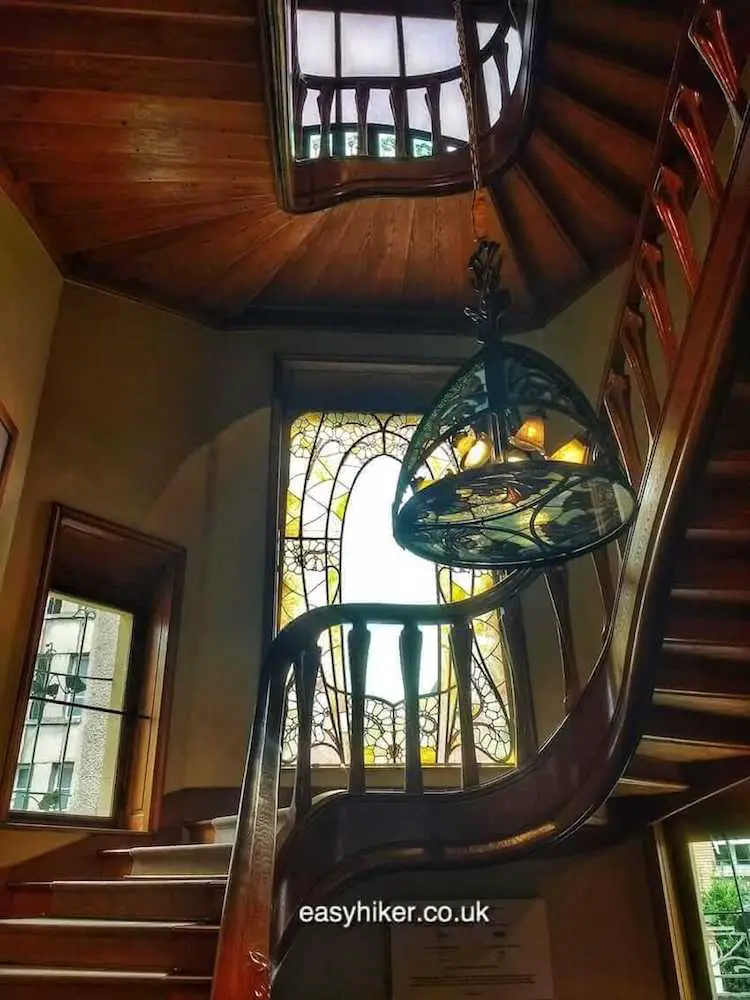
… but also contains works of other masters from the French Arts and Crafts movement.
The architect of the villa was Henri Sauvage (famous for the Samaritaine department store in Paris), the glass windows were created by Jacques Gruber (who also designed the Credit Lyonnais glass ceiling), and this painting on the walls of the interior terrace …
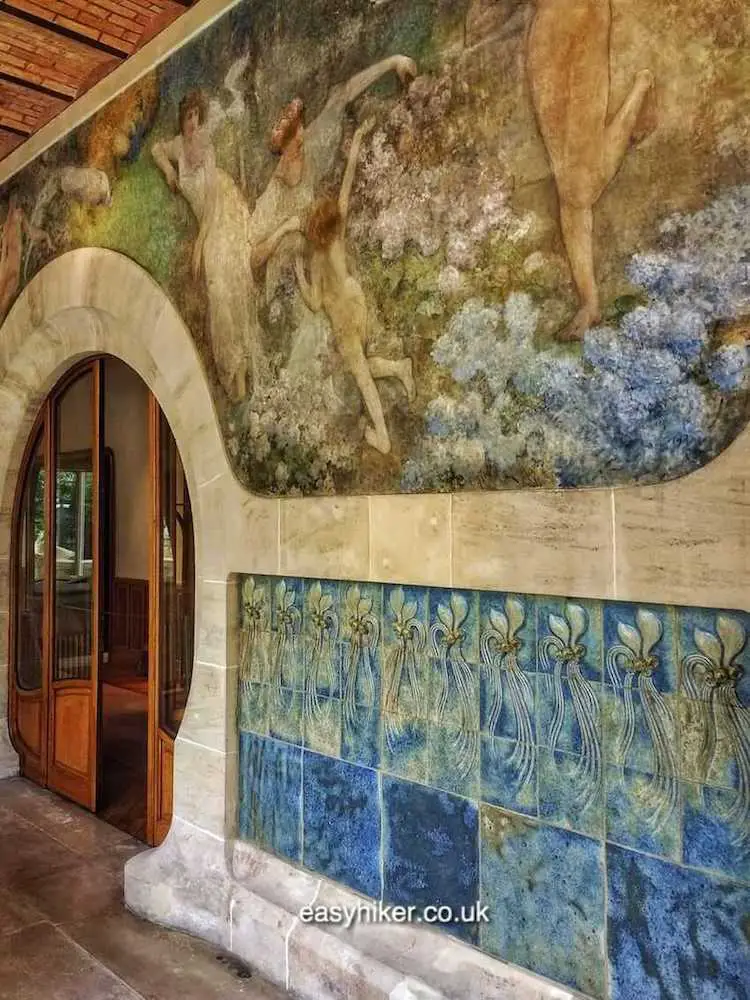
… is by Henri Royer, who was born in Nancy but worked a lot in the USA where he also contributed artworks to the 1932 Olympic Games in Los Angeles.
This is where our walk ends. We suggest to schedule the two halves of the walk on either side of lunchtime, so your timing matches the opening hours of both the Excelsior Brasserie kitchen and the Villa Majorelle (Wednesdays to Sundays, 1400 to 1800 hrs).
If you are willing to dedicate a whole day to your exploration of Nancy’s Art Nouveau architecture, you can download a Tourism Office brochure with more suggestions here.

